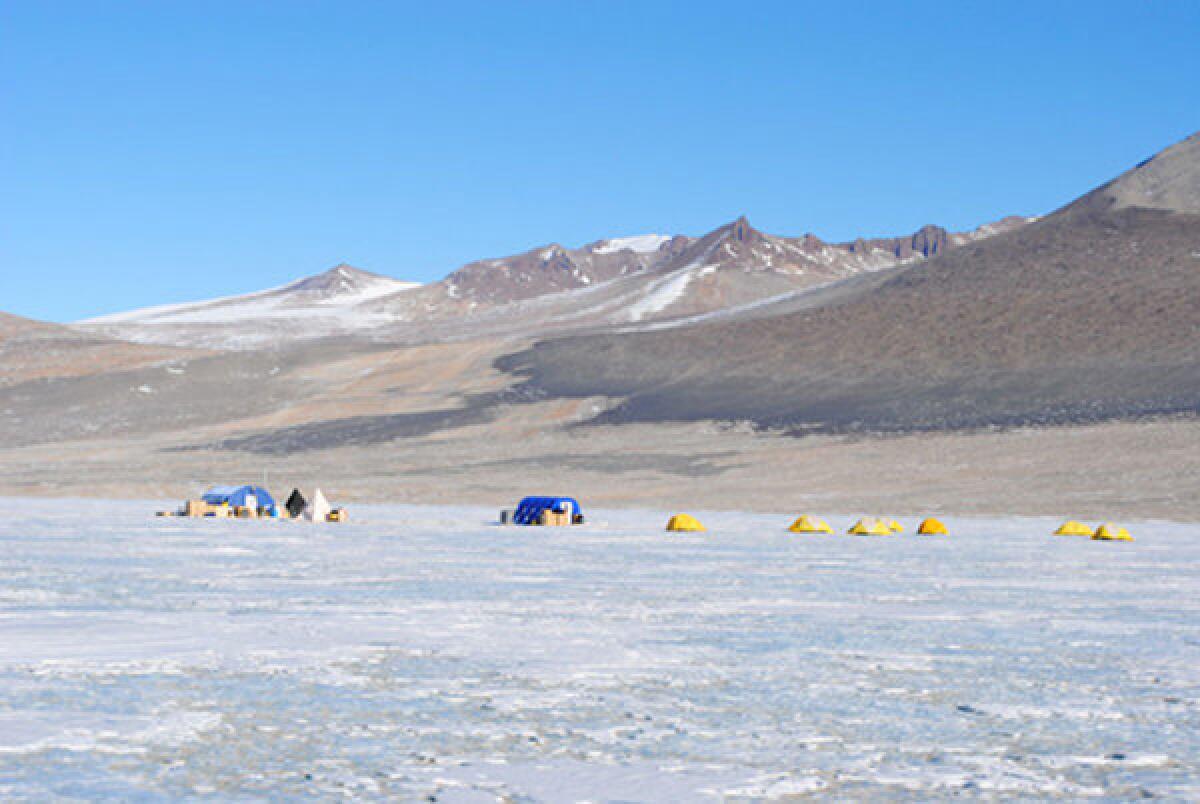Beneath 50-foot ice layer, an Antarctic lake full of life

- Share via
Beneath a 50-foot-thick sheet of ice, the salty, frigid Antarctic Lake Vida is somehow teeming with life. That’s according to a report published Monday in the Proceedings of the National Academy of Sciences.
Lake Vida provides a unique test of what happens to life over long periods of time when organisms are exposed to extremely harsh conditions. The layer of ice completely seals off the lake. The water is 13 degrees below zero Celsius, is very salty and contains no oxygen.
Nonetheless, when researchers drilled through the ice to carefully sample what lies below, they found the lake was full of life even though it has been sealed off for around 2,800 years: Vida contained about one-tenth the microbial life of a lake in a mild climate under average environmental conditions, an amount far above what the researchers expected.
Researchers using DNA analysis identified 32 species of bacteria from eight phyla but found no archaea, a category of microbes considered distinct from bacteria that tend to live in extreme environments.
Based on the amount of time the lake has been closed off, the researchers had anticipated that it would be nearing the end of its energy stores. But given the robust bacterial world they found, that seemed not to be the case.
That means a major source of energy is likely coming from elsewhere — potentially from hydrogen released via chemical reactions taking place between the water and iron contained in the rocks on lake floor. But the researchers remain unsure exactly how life has survived under the ice of Lake Vida.
It’s a topic certain to receive further attention, both because it may shed light on how life evolved on Earth, and it may provide clues as to how life could potentially exist on other planets that have environments unlike the one we are used to.
Return to the Science Now blog.





